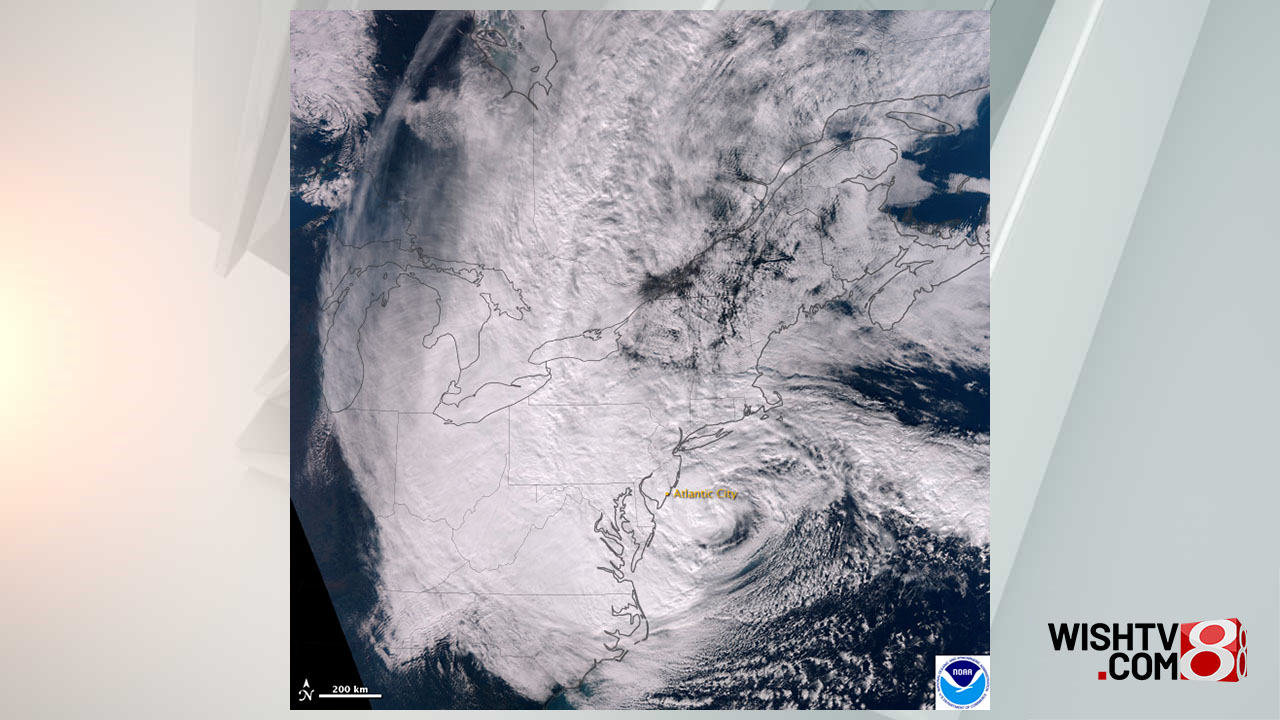Hurricane Sandy: Disaster revisited a decade later
INDIANAPOLIS (WISH) — Ten years ago, in late October 2012, Hurricane Sandy caused extensive havoc in the mid-Atlantic region of the eastern United States.
The impact Sandy brought to the U.S. is still unfortunately fresh in the mind of those who either witnessed or experienced it as it brought devastating flooding and high winds.
Sandy was the 18th named tropical storm and second major hurricane of the 2012 Atlantic Ocean hurricane season. This system began as a low pressure system south of Jamaica, and eventually became Tropical Depression 18 on Oct. 22. Sandy would become a hurricane on Oct. 24 about 65 miles south of Jamaica. It would make landfall near Kingston, Jamaica, with winds of 85 mph.


Sandy rapidly intensified to Category 3 status just offshore Cuba and made landfall near Santiago de Cuba early on Oct. 25.
Once Sandy left Cuba, it became disorganized and weakened back to tropical storm status near the Bahamas.
It wasn’t long before Sandy went back to Category 1 status on Oct. 27 and churned northward.

By Oct. 29, Sandy briefly reattained Category 2 status, and the size of the system had became enormous. It was so large that tropical-storm-force winds extended 1,150 miles across the entire system. To put that size into perspective, that is the equivalent of driving from Indianapolis to Albuquerque, New Mexico. The central pressure of Sandy eventually fell to 940 millibars, which wound up setting records for many northeastern U.S. cities as the lowest pressures ever observed.
As Sandy barreled toward New Jersey, the convection associated with the system diminished, thus making Sandy no longer considered “tropical” at 5 p.m. EDT Oct. 29. Sandy would make landfall 2½ hours later near Brigantine, New Jersey, with sustained winds of 80 mph.
The remnants of the system would continue to drift westward toward Ontario before merging with another system on Nov. 2.

Several states such as New York, New Jersey, Virginia, Pennsylvania, Delaware and Maryland declared states of emergency within one to three days of Sandy’s main impact. The intensity and span of the strong winds and flooding caused lots of issues from Florida up to the New England region and Ontario.
New York and New Jersey especially were among the hardest hit states with thousands of homes and structures damaged or destroyed, and the widespread inundation of water.
The East River in New York overflowed its banks and flooded large parts of Lower Manhattan, and seven subway tunnels were flooded under the river itself. The Metropolitan Transportation Authority noted that it was the worst disaster in the 108-year history of the New York subway system. The cost of the damage for New York alone stood at $42 billion.
New York and New Jersey had a combined 96 fatalities, and Sandy was deemed to have been the worst hurricane to hit New York since at least 1700.
The New England region was also hammered with significant wind gusts with Cape Cod and Buzzards Bay in Massachusetts, for instance, recording winds over 80 mph. Massachusetts had nearly 300,000 people without power, and Rhode Island saw up to 100,000 power outages. High winds were also observed in Ohio and Ontario.
One interesting thing to note as well is that an arctic front merged with Sandy’s remnants and led way to snow for portions of Ohio, eastern Kentucky, and West Virginia.
It is also important to note the environmental impacts Sandy caused. The intense flooding proved to be too much for water-treatment infrastructure along the East Coast of the United States. When the storm ended, more than 200 wastewater treatment plants and over 80 drinking-water facilities had been severely damaged. The resulting damage caused more than 10 billion gallons of raw sewage to be released into different water sources.
Overall, Sandy wound up becoming one of the costliest U.S. Atlantic hurricanes on record. A total of 223 people were killed, with 157 of those deaths happening in the mainland United States. Sandy became the deadliest hurricane to strike the U.S. East Coast since Hurricane Agnes in 1972.
Due to the enormous size of Sandy, it is the largest Atlantic hurricane on record as measured by its diameter.

